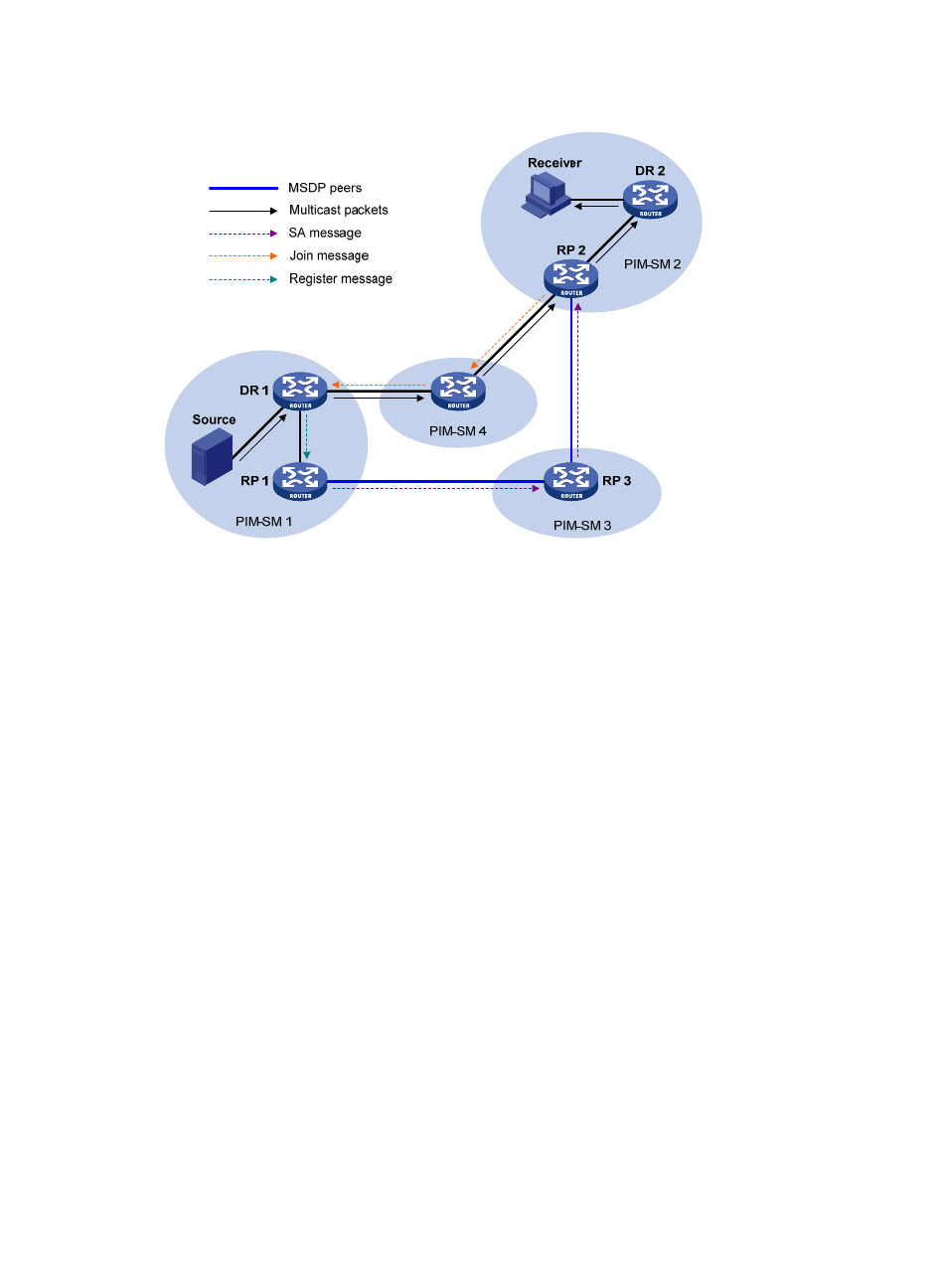H3C Technologies H3C S12500 Series Switches User Manual
Page 203

187
Figure 56 Inter-domain multicast delivery through MSDP
The process of implementing PIM-SM inter-domain multicast delivery by leveraging MSDP peers is as
follows:
1.
When the multicast source in PIM-SM 1 sends the first multicast packet to multicast group G, DR 1
encapsulates the multicast data within a register message and sends the register message to RP 1.
Then, RP 1 identifies the information related to the multicast source.
2.
As the source-side RP, RP 1 creates SA messages and periodically sends the SA messages to its
MSDP peer. An SA message contains the source address (S), the multicast group address (G), and
the address of the RP that has created this SA message (RP 1).
3.
On MSDP peers, each SA message undergoes a reverse path forwarding (RPF) check and
multicast policy–based filtering, so that only SA messages that have arrived along the correct path
and passed the filtering are received and forwarded. This avoids delivery loops of SA messages.
In addition, you can configure MSDP peers into an MSDP mesh group so as to avoid flooding of
SA messages between MSDP peers.
An MSDP mesh group refers to a group of MSDP peers that have MSDP peering relationship
among one another and share the same group name.
4.
SA messages are forwarded from one MSDP peer to another, and finally the information about the
multicast source traverses all PIM-SM domains with MSDP peers (PIM-SM 2 and PIM-SM 3 in this
example).
5.
After receiving the SA message that RP 1 created, RP 2 in PIM-SM 2 determines whether any
receivers for the multicast group exist in the domain.
{
If so, the RPT for the multicast group G is maintained between RP 2 and the receivers. RP 2
creates an (S, G) entry, and sends an (S, G) join message hop by hop toward DR 1 at the
multicast source side, so that it can directly join the SPT rooted at the source over other PIM-SM
domains. Then, the multicast data can flow along the SPT to RP 2 and RP 2 can forward the data
to the receivers along the RPT. After receiving the multicast traffic, the DR at the receiver side (DR
2) determines whether to initiate an RPT-to-SPT switchover process.